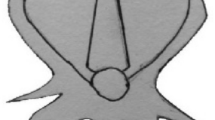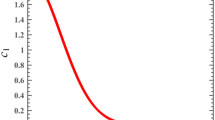Abstract
Salp swarm algorithm (SSA) is a newly swarm-based metaheuristic algorithm that simulate the swimming and foraging behaviour of salps in oceans so to search for global optimum solution. Similarly to other metaheuristic algorithms, SSA suffers from poor convergence rate and stagnation in local optima. In this paper, three different improvements to the original population update process are proposed in order to enhance its exploitation and exploration capabilities. The first modification (MSSA1) introduces the concept of local best information to the followers salps update process allowing a better exploration of local search neighbourhood. The second improvement (MSSA2) provide two followers update process. The first is based on a differential evolution combined with a randomly selected local best position, and the second uses a local search in the global best neighbourhood which is triggered by a non-improvement in the corresponding local best. A third modification to the SSA algorithm (MSSA3) penalises a non-improvement of the local best solution by computing a new corresponding follower’s position based on a local jump in the local best neighbourhood for better exploitation. The performances of the proposed algorithms are tested on 27 CEC’15 test suite, and two real-world optimisation problems. A comparative study using nonparametric statistical tests of the obtained results is conducted against those of eight well-known metaheuristics, including the original SSA. The results indicate an overall distinctive performance of all three modification compared to the remaining algorithms, while MSSA1 scored generally better than MSSA2 and MSSA3.




Similar content being viewed by others
References
Abedinpourshotorban H, Shamsuddin SM, Beheshti Z, Jawawi DN (2016) Electromagnetic field optimization: a physics-inspired metaheuristic optimization algorithm. Swarm Evol Comput 26:8–22
Abualigah L, Shehab M, Al Shinwan M, Alabool H (2019) Salp swarm algorithm: a comprehensive survey. Neural Comput Appl. https://doi.org/10.1007/s00521-019-04629-4
Alcalá-Fdez J, Sánchez L, García S, del Jesus MJ, Ventura S, Garrell JM, Otero J, Romero C, Bacardit J, Rivas VM, Fernández JC, Herrera F (2009) Keel: a software tool to assess evolutionary algorithms for data mining problems. Soft Comput 13(3):307–318
Aljarah I, Mafarja M, Heidari AA, Faris H, Zhang Y, Mirjalili S (2018) Asynchronous accelerating multi-leader salp chains for feature selection. Appl Soft Comput 71:964–979. https://doi.org/10.1016/j.asoc.2018.07.040
Arora JS (2004) Introduction to optimum design. Elsevier, Amsterdam
Askarzadeh A (2016) A novel metaheuristic method for solving constrained engineering optimization problems: crow search algorithm. Comput Struct 169:1–12
Bairathi D, Gopalani D (2020) Opposition based salp swarm algorithm for numerical optimization. In: Abraham A, Cherukuri AK, Melin P, Gandhi N (eds) Intelligent systems design and applications. Springer, Cham, pp 821–831
Boudjemaa R, Oliva D, Ouaar F (2020) Fractional Lévy flight bat algorithm for global optimisation. Int J Bio Inspir Comput 15(2):100–112
Conover W (1999) Practical nonparametric statistics, 3rd edn. Wiley series in probability and statistics. Wiley, New York
Couceiro MS, Rocha RP, Ferreira NMF, Machado JAT (2012) Introducing the fractional-order Darwinian PSO. Signal Image Video Process 6(3):343–350
Derrac J, García S, Molina D, Herrera F (2011) A practical tutorial on the use of nonparametric statistical tests as a methodology for comparing evolutionary and swarm intelligence algorithms. Swarm Evol Comput 1(1):3–18
Dorigo M, Maniezzo V, Colorni A (1996) Ant system: optimization by a colony of cooperating agents. IEEE Trans Syst Man Cybern Part B (Cybern) 26(1):29–41
Elsayed Abd Elaziz M, Ewees A, Alameer Z (2019) Improving adaptive neuro-fuzzy inference system based on a modified salp swarm algorithm using genetic algorithm to forecast crude oil price. Nat Resour Res. https://doi.org/10.1007/s11053-019-09587-1
Eusuff M, Lansey K, Pasha F (2006) Shuffled frog-leaping algorithm: a memetic meta-heuristic for discrete optimization. Eng Optim 38(2):129–154
Faris H, Mirjalili S, Aljarah I, Mafarja M, Heidari AA (2020) Salp swarm algorithm: theory, literature review, and application in extreme learning machines. Springer, Cham, pp 185–199. https://doi.org/10.1007/978-3-030-12127-3_11
Goldberg DE (1989) Genetic algorithms in search, optimization and machine learning, 1st edn. Addison-Wesley Longman Publishing Co., Inc, Boston
Hashim FA, Houssein EH, Mabrouk MS, Al-Atabany W, Mirjalili S (2019) Henry gas solubility optimization: a novel physics-based algorithm. Future Gener Comput Syst 101:646–667
Hegazy AE, Makhlouf M, El-Tawel GS (2018) Improved salp swarm algorithm for feature selection. J King Saud Univ Comput Inf Sci 32:335–344
Heidari AA, Mirjalili S, Faris H, Aljarah I, Mafarja M, Chen H (2019) Harris hawks optimization: algorithm and applications. Future Gener Comput Syst 97:849–872
Ibrahim R, Ewees A, Oliva D, Elsayed Abd Elaziz M, Lu S (2018) Improved salp swarm algorithm based on particle swarm optimization for feature selection. J Ambient Intell Human Comput. https://doi.org/10.1007/s12652-018-1031-9
Karaboga D (2005) An idea based on honey bee swarm for numerical optimization. Tech. Rep. TR06, Erciyes University
Kaveh A, Mahdavi V (2014) Colliding bodies optimization: a novel meta-heuristic method. Comput Struct 139:18–27
Kennedy J, Eberhart R (1995) Particle swarm optimization. In: IEEE international conference on neural networks, 1995. Proceedings, vol 4, pp 1942–1948
Li S, Chen H, Wang M, Heidari AA, Mirjalili S (2020) Slime mould algorithm: a new method for stochastic optimization. Future Gener Comput Syst 111:300–323
Majhi SK, Mishra A, Pradhan R (2019) A chaotic salp swarm algorithm based on quadratic integrate and fire neural model for function optimization. Prog Artif Intell. https://doi.org/10.1007/s13748-019-00184-0
Meng X, Gao X, Liu Y, Zhang H (2015) A novel bat algorithm with habitat selection and Doppler effect in echoes for optimization. Expert Syst Appl 42(17–18):6350–6364
Mirjalili S (2015) Moth-flame optimization algorithm: a novel nature-inspired heuristic paradigm. Knowl Based Syst 89:228–249
Mirjalili S, Gandomi AH, Mirjalili SZ, Saremi S, Faris H, Mirjalili SM (2017) Salp swarm algorithm: a bio-inspired optimizer for engineering design problems. Adv Eng Softw 114:163–191. https://doi.org/10.1016/j.advengsoft.2017.07.002
Mirjalili S, Lewis A (2016) The whale optimization algorithm. Adv Eng Softw 95(C):51–67
Neggaz N, Ewees AA, Elaziz MA, Mafarja M (2020) Boosting salp swarm algorithm by sine cosine algorithm and disrupt operator for feature selection. Expert Syst Appl 145:113103
Qu B, Liang J, Wang Z, Chen Q, Suganthan P (2016) Novel benchmark functions for continuous multimodal optimization with comparative results. Swarm Evol Comput 26:23–34
Rao SS (1996) Engineering optimization. Wiley, New York
Rashedi E, Nezamabadi-pour H, Saryazdi S (2009) GSA: a gravitational search algorithm. Inf Sci 179(13):2232–2248 Special section on high order fuzzy sets
Storn R, Price K (1997) Differential evolution—a simple and efficient heuristic for global optimization over continuous spaces. Glob Optim 11(4):341–359
Tubishat M, Idris N, Shuib L, Abushariah MA, Mirjalili S (2020) Improved salp swarm algorithm based on opposition based learning and novel local search algorithm for feature selection. Expert Syst Appl 145:113122
Wu J, Nan R, Chen L (2019) Improved salp swarm algorithm based on weight factor and adaptive mutation. J Exp Theor Artif Intell. https://doi.org/10.1080/0952813X.2019.1572659
Xing Z, Jia H (2019) Multilevel color image segmentation based on GLCM and improved salp swarm algorithm. IEEE Access 7:37672–37690. https://doi.org/10.1109/ACCESS.2019.2904511
Yang B, Zhong L, Zhang X, Shu H, Yu T, Li H, Jiang L, Sun L (2019) Novel bio-inspired memetic salp swarm algorithm and application to MPPT for PV systems considering partial shading condition. J Clean Prod 215:1203–1222
Yang X, Gandomi AH (2012) Bat algorithm: a novel approach for global engineering optimization. Eng Comput 29(5):464–483
Yang XS, Deb S (2009) Cuckoo search via Lévy flights. In: 2009 world congress on nature biologically inspired computing (NaBIC), pp 210–214
Yang XS, He X (2013) Bat algorithm: literature review and applications. Int J Bio Inspir Comput 5(3):141–149
Author information
Authors and Affiliations
Corresponding author
Ethics declarations
Conflict of interest
The authors declare that they have no conflict of interest.
Additional information
Publisher's Note
Springer Nature remains neutral with regard to jurisdictional claims in published maps and institutional affiliations.
Appendices
Appendix A
Four variables are considered in solving the welded beam structure problem, namely thickness of the weld (h), length of the attached bar (l), height of the bar (t) and thickness of the bar (b). The objective of the problem is a welded beam designed for minimum cost subject to constraints on shear stress (\(\tau \)), bending stress (\(\theta \)), end deflection of the beam (\(\delta \)), buckling load on the bar (\(P_C\)), and side constrains. The mathematical formulation of the problem is listed below:
Consider:
Minimise:
Subject to:
where
with
Appendix B
The tension/ compression spring design problem consists of minimising the volume V of a coil spring under a fixed tension/ compression load. Mathematically, the problem is illustrated as follows: Consider:
Minimise:
Subject to:
with
Rights and permissions
About this article
Cite this article
Ouaar, F., Boudjemaa, R. Modified salp swarm algorithm for global optimisation. Neural Comput & Applic 33, 8709–8734 (2021). https://doi.org/10.1007/s00521-020-05621-z
Received:
Accepted:
Published:
Issue Date:
DOI: https://doi.org/10.1007/s00521-020-05621-z




